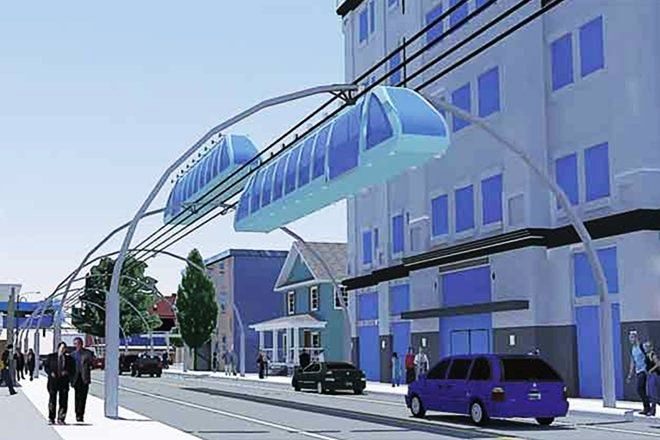It’s been almost 12 years since the failure of the famed Sky Bus project in Goa, supposed to be a mass transit solution to the city’s traffic woes. However will the new C-Train concept be capable of answering commuters’ transit woes?
A Caterpillar Train (C-Train) System was a plan devised by Ashwini Kumar, engineer of Indian Railways and Emil Jacob owner of Jacob Innovations LLC for the state’s capital -Panjim.
Caterpillar Train (Video) vs. the Failed Sky Bus project (Margao)

C-Train Functions
- Designed to run on elevated tracks supported by narrow poles
- Maximum Speed 100 kms/hr
- Accommodates 20 passengers
- Coaches have wheels above and below, hence it can run on track as well as below tracks
The Indian Railway Traffic Service will present this idea to academicians and town planners at a global conference in Boston this month. The design is in response to the question on how to integrate effective mass transit into an urban environment without creating an eyesore or adding to traffic congestion.
The C-Train concept was positioned at the top of the 29 submissions in the Transportation category. Urban mobility and effective public transport will be Goa’s future if the plan is approved.
Answering commuters’ prayers
If the concept is put into action, citizens of the state will benefit tremendously.
- C-Trains will reduced the inflow of vehicles into the city
- Existing parking spaces will be utilized efficiently
- Eliminate the need to create additional parking space
- Costs only one-fifteenth of a conventional metro system
- Can be set up wherever a five meter road exists
Most Goan roads were built during the Portuguese rule, which are very narrow. Road widening has become a difficult task as many property owners have their homes adjacent to these narrow streets. This has caused parking issues and traffic jams. I hope the government realises the need for C-Trains and builds the required infrastructure.


